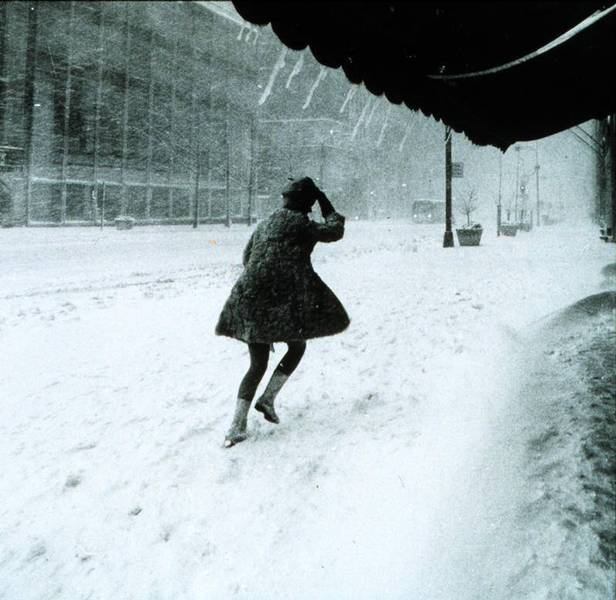Solar scientists, not to be confused with climate scientists, study the most important heat engine driving our planet's temperatures-the sun.
Matthew Penn and William Livingston, solar astronomers with the National Solar Observatory (NSO) in Tucson, Arizona, have found a marked decrease in sunspot activity lately. Studies show that such a marked drop in sunspots may lead to a prolonged cooling epoch or even a new ice age.
Since the formation of the Intergovernmental Panel on Climate Change (IPCC) in 1988 the talk has been about global warming. But 22 years on the evidence has grown to raise fears of a catastrophic climate switch in the opposite direction. We look at the evidence that is raising some very serious questions in the scientific community.
Zeeman Splitting Technique Raises Solar Alarm
Penn and Livingston used a measuring technique known as Zeeman splitting to study the magnetic strength of sunspots. The technique measures the distance between a pair of infrared spectral lines in a spectrograph from the light emitted by iron atoms in the atmosphere of the sun.
After examining 1500 sunspots they found that the average strength of the magnetic field of the sunspots has dropped by almost 40 percent in recent years. The reasons for the decline are unknown, but Penn and Livingston predict only half of the normal sunspots may appear on the surface of the Sun by 2021. Below that strength the formation of sunspots becomes almost impossible. More sunspots correlate with more global warming, fewer sunspots over a long period means prolonged cooling is likely.
Other Experts Confirm Fears
Backing up the claims is Australian Geophysicist, Phil Chapman, a former NASA astronaut. Chapman confirms the historic correlation of sunspots to global temperatures and points to the dearth of sunspots since 2007 as the reason why the world has since cooled by about 0.7C.
Writer, Alan Caruba (September 21, 2010) probes the story further after a June 14 article published in the <New Scientist by Stuart Clark.
Caruba reports that Clark, "raised the question of why and where the sunspots of gone." Noting that they ebb and flow in cycles lasting about eleven years, Stuart said, "But for the last two years, the sunspots have mostly been missing. Their absence, the most prolonged in nearly 100 years, has taken even seasoned sun watchers by surprise."
Return to another Little Ice Age or Worse?
The last time sunspots disappeared altogether, during the Maunder Minimum (about 1645 to 1715), our planet descended into a lengthy period of cooling known as the Little Ice Age.
Prior to that an even more cataclysmic cooling event, known as the Younger Dryas happened 12,000 years ago. That sudden event plunged temperatures in the North Atlantic region to about 5°C colder and lasted for 1000-year duration.
Global Cooling Impacts Being Felt Now
Last year in the northern hemisphere, Britain suffered one of the worst winters in 100 years. While in the U.S. the National Weather Service (NWS) reported that the bitterly cold winter broke numerous temperature and snow extent records with 2010 seeing the 4th coldest February on record. New York and much of the U.S. Northeast was pumeled by record snow falls that deposited about 60cm (2 feet) of snow in NYC alone.
Worst Snow Falls Since 1970's
Rutgers University Global Snow Lab also confirms that the 2010 Northern Hemisphere winter snow extent was the second highest on record, at 52,166,840 km2 and second only to February, 1978 which was slightly higher at 53,647,305 km2.
Indeed, it was in the 1970s, when climatologists were worried about the onset of an ice age, that we were warned of the 'The Cooling World' (Newsweek, April 28, 1975). Meanwhile Anna Petherick reporting for Nature.com ( August 27, 2010) shows that a brutal northern winter has been followed in the southern hemisphere by a viciously cold winter with an Antarctic chill killing millions of aquatic animals in the Amazon.
So will we see more scientists return to predicting global cooling due to changes in our sun?
References
- Edwards L., 'Sunspots could soon disappear for decades: study,' (September 15, 2010), Physorg.com (accessed: September 21, 2010)
- Sato, R., 'Is a "Little Ice Age" Imminent? -Maverick Scientists Say "Yes"' (August 26, 2008), dailygalaxy.com (accessed: September 21, 2010)
- Caruba A., 'Casandra Says it Will Get very Cold,' ( September 20, 2010), Canadafreepress.com (accessed: September 21, 2010)
- Penn M., and Livingston W., 'Long-term Evolution of Sunspot Magnetic Fields,' arXiv:1009.0784v1 [astro-ph.SR]
- Felix R., 'Little Ice Age Cometh Sunspots could disappear for decades,' iceagenow.com (accessed: September, 21, 2010)
- Petherick A., 'Cold empties Bolivian rivers of fish,' (August 27, 2010), Nature.com ( accessed: September 21, 2010).




Reader Comments
to our Newsletter